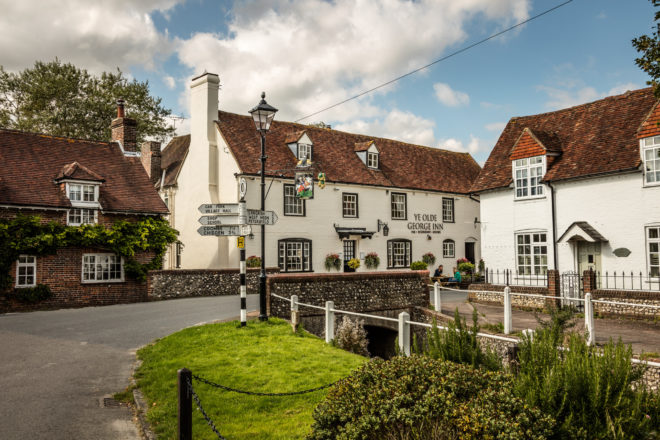The lowdown on enforcement in the South Downs National Park
December 20, 2021
 Enforcement is a key role of the National Park Authority, helping to conserve and enhance both the natural and built environment. But how does it all work? We caught up with Heather Lealan, who is at the helm of the enforcement team.
Enforcement is a key role of the National Park Authority, helping to conserve and enhance both the natural and built environment. But how does it all work? We caught up with Heather Lealan, who is at the helm of the enforcement team.
 Hi Heather. So what’s planning enforcement?
Hi Heather. So what’s planning enforcement?
Simply put our role is to conserve and enhance the natural beauty, wildlife and cultural heritage of the South Downs National Park. We’re committed to ensuring that planning legislation is enforced and where planning permission is granted, approved plans and conditions are followed.
Who deals with enforcement enquiries for the National Park?
Our own enforcement officers deal with all planning-related matters in the following areas: Arun, Adur & Worthing, Brighton & Hove, Eastbourne, Mid-Sussex and Wealden. Other areas deliver enforcement on our behalf through our host authority arrangements (such as East Hampshire), but we do work closely with those teams.
Additionally, we deliver enforcement for minerals and waste planning issues across the whole of the National Park.
It’s a big remit, so it’s safe to say no two days are the same! As it’s such a large and complex area, we also work closely with other organisations, such as the Environment Agency, police, parish councils, county councils and Forestry Commission.
What constitutes a breach of planning control?
Well, here’s a summary:
- Development not in accordance with the approved plans of a planning permission
- Material change of use of building or land business
- Failure to comply with the conditions attached to a planning permission
- Unauthorised works to trees protected by a tree preservation order or in a conservation area
- Works to a listed building without listed building consent
- Unauthorised demolition in a conservation area
- Displaying a sign or advertisement without advertisement consent

How do you resolve a planning breach?
Our first port of call is negotiation – where that’s possible of course! The aim of the negotiation is to cease the unauthorised use, remove any unauthorised development or to persuade people to comply with conditions on a permitted development. We can also negotiate with people to apply for retrospective planning permission where necessary. When negotiation does not work, we obviously have legal powers we’re able to enforce.
What different types of enforcement are there?
There are several. Probably the most common actions are Enforcement Notice, Listed Building Enforcement Notice, Breach of Condition Notice and Full and Temporary Stop Notices. We also have the power to impose Section 215 Untidy Land Notices, injunctions and pursue prosecutions through the courts.
What are the possible outcomes of an enforcement investigation?
Once we’ve done an investigation I would say there are five main possibilities:
- No breach of planning control
- There is a breach of planning control but it is not expedient to pursue
- Unauthorised development can be made acceptable by the imposition of conditions on a retrospective permission
- Unauthorised development is unacceptable and immediate remedial action is required
- Immunity from enforcement action due to the length of time that a breach has occurred for.
How many enforcement cases are there every year?
In an average year, there are well over 1,000 across the National Park, so it’s always busy. In 2019/2020, 650 new enforcement cases were received in the financial year while 740 cases were closed. If you’d like to find out more please do take a look at our Enforcement Guide.
(Main image by John Richardson)
